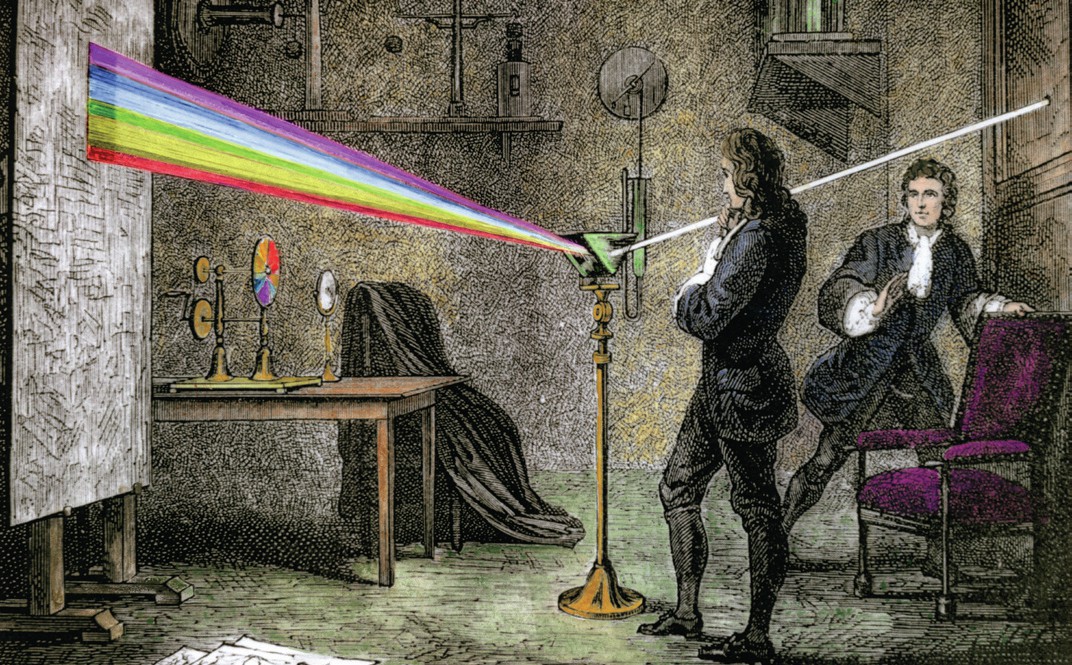
We all know the seven colours of the rainbow: red, orange, yellow, green, blue, indigo, violet, though most people don’t see indigo as a separate colour. When Isaac Newton (1642–1727) studied the spectrum of white light produced by a prism (1, 2), he introduced indigo to make the total up to seven. Seven was thought to be a ‘natural’ number related to the known celestial bodies (Sun, Moon, Mars, Mercury, Jupiter, Venus, Saturn, which in many languages give their names to days of the week) and notes A to G of the musical scale.
Newton favoured a particle model for light (he referred to ‘corpuscles), but later experiments showed that a wave model is needed in many situations. Visible light occupies a narrow range of wavelengths in the electromagnetic spectrum (3). The particle model came back into favour when Albert Einstein (1879–1955) explained the photoelectric effect (4) in terms of photons (‘particles’ of light). The two models are related by
Your organisation does not have access to this article.
Sign up today to give your students the edge they need to achieve their best grades with subject expertise
Subscribe




